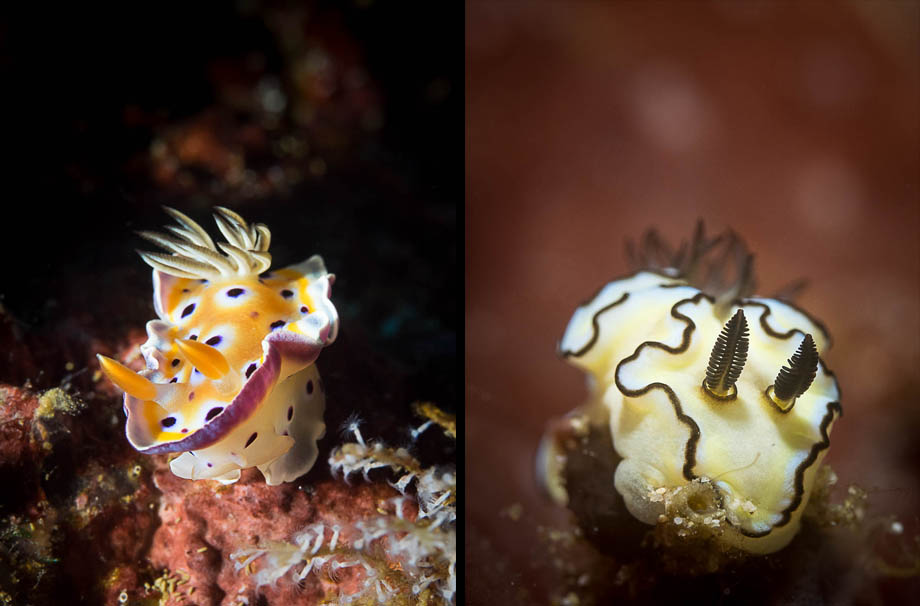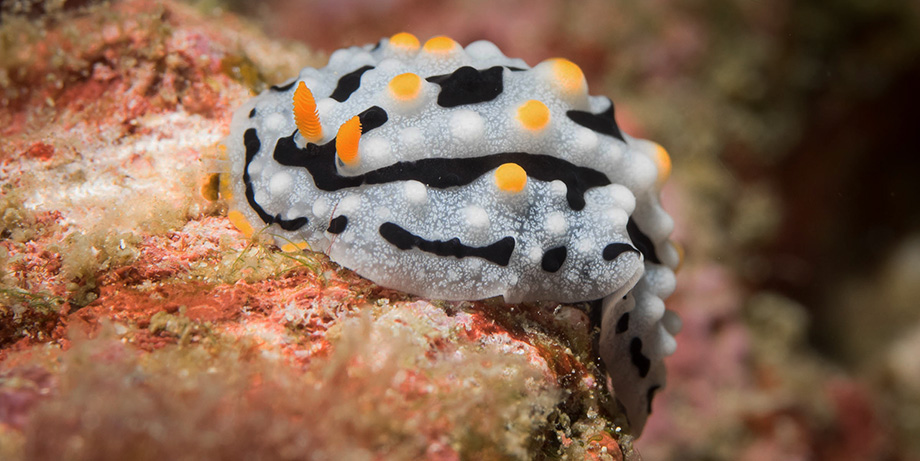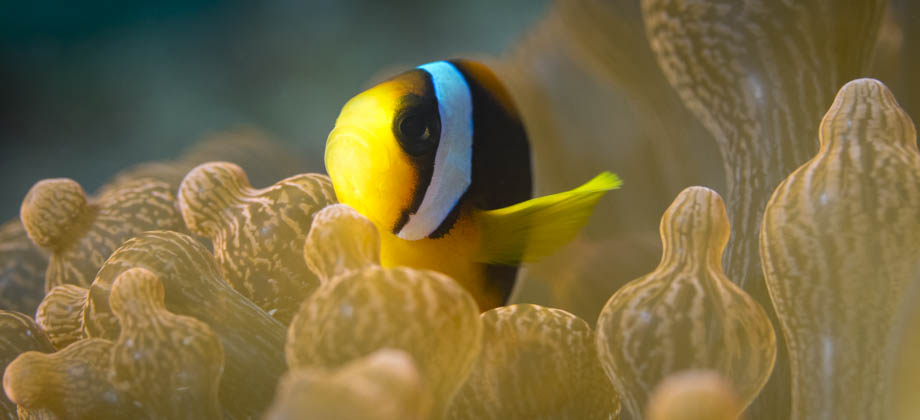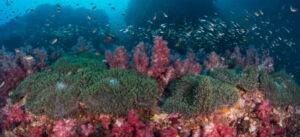Weh Island
Marine Life
Weh island is located where the Andaman Sea in the north meets the Indian Ocean, so there is a staggering diversity of marine life that can be found in the waters around the island. One thing that you'll notice fairly quickly when you dive here is the sheer abundance of the redtoothed triggerfish (Odonus niger), that seem to completely surround you as you enter the water, their characteristic oval shape silhouetted against the deep blue backdrop, and seem to stay with you as you descend all the way down to the bottom. Red lionfish (Pterois volitans), and other ubiquitous coral fish like the powderblue surgeonfish (Acanthurus leucosternon) and moorish idols (Zanclus cornutus) are a few of the other fish that you are guaranteed to see on almost every dive here.
When the water temperature begins to drop around the beginning of October, larger, far more uncommon pelagics begin to arrive, with schools of devil rays (Mobula spp.) and solitary manta rays (Manta spp.) occasionally seen when the conditions are just right. If you are very lucky, you might even spot a whale shark (Rhincodon typus) or even an ocean sunfish (mola mola)!
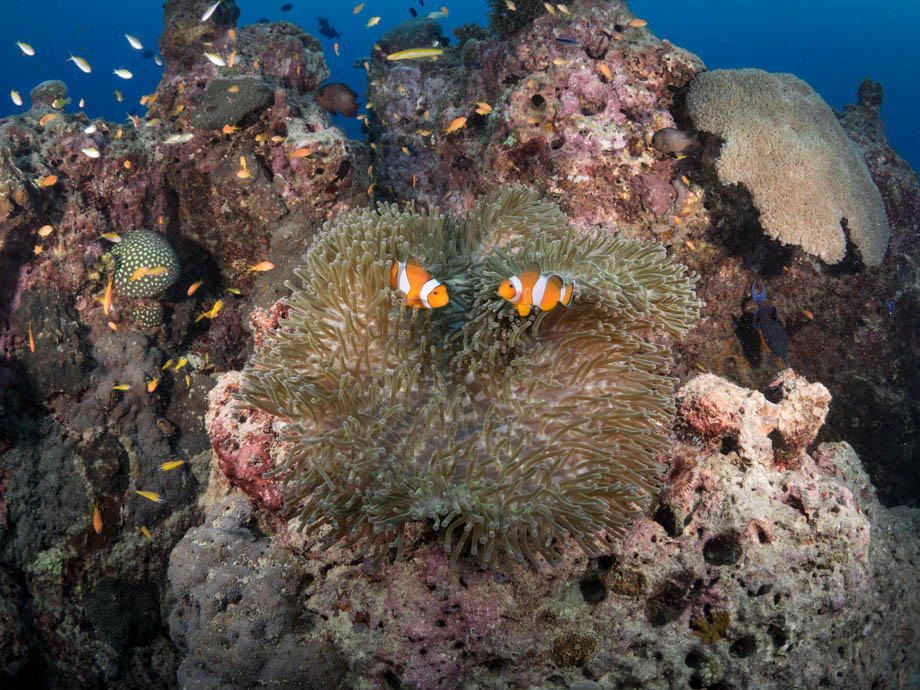
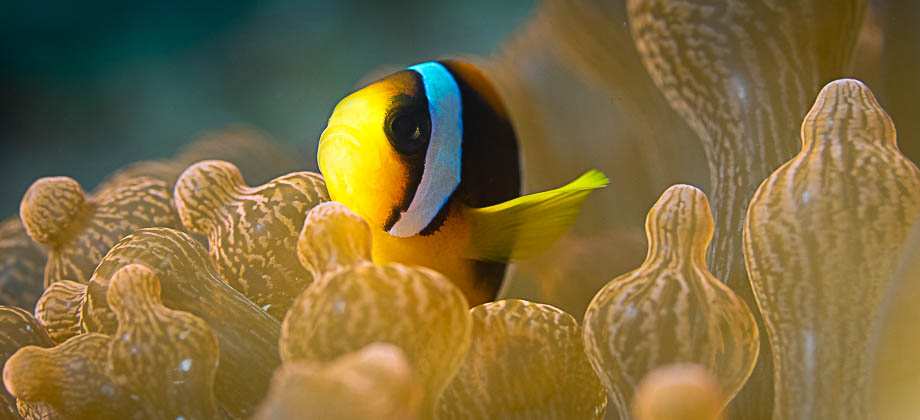
Nudibranchs are also quite common around the island, with some of them having mantles that seemingly flap in the underwater 'breeze'. This act of 'mantle-flapping' can sometimes be quite rhythmic in certain species, where the edges of the mantle both rise and fall simultaneously. Both the Goniobranchus geminus and the Goniobranchus coi take part in this act of 'mantle-flapping'. Some species of nudibranchs are also known to dispose of this mantle in order to evade predators, in a process known as autotony. There is even at least one species of nudibranch that disposes of its own genitalia after mating and then regrows another in order to mate again! The nudibranchs that you are most likely to see around Weh island are Phyllidia ocellata, Phyllidia varicosa, Phyllidia pustulosa, Goniobranchus geminus, and Glossodoris atromarginata.
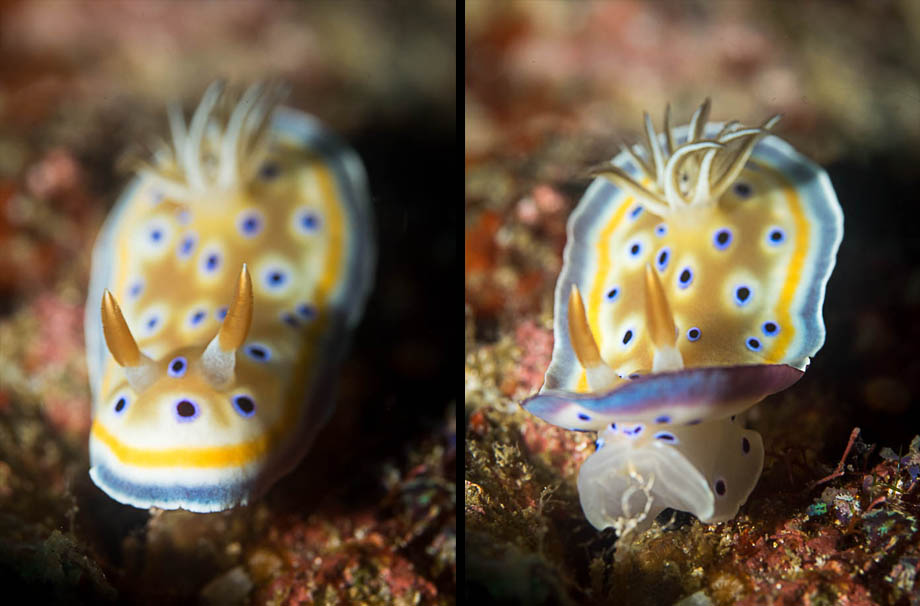
When one goes macro hunting, one tends to pay attention to every single detail, no matter how small. On the last trip I noticed that certain nudibranchs always seemed to be surrounded by certain types of sea squirts (tunicates): the black-margined glossodoris (Glossodoris atromarginata) with white speck sea-squirts (Didemnum conchyliatum), and the pustulose wart slug (Phyllidia pustulosa) with green reef sea-squirts (Didemnum molle). Were these tunicates the preferred meal of the nudibranchs, or was it just a coincidence? These tunicates (commonly called sea squirts) are invertebrates that are fascinating in their own right. Most of them are sessile, meaning that they are permanently attached to hard coral or rocks on the floor of the ocean, and have to resort to filter-feeding because of this immobility. Tunicates do this by pumping water through their bodies using a siphon, and then proceed to discharge it via another siphon after all the plankton and oxygen has been filtered out.
